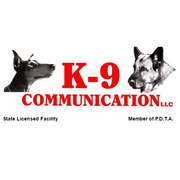
A long time ago, I asked my head instructor what is the proper way to correct a dog? My instructor politely said, “Gus, if there is ever any butt kicking to be done, find a mirror!” To this day, I continue to live by this motto. There are countless ways to train a dog, and as far as equipment goes, the list is a mile long. But it’s the person behind the methods and equipment that qualifies them as a trainer.
Equally as important, though, is knowledge. Anyone can jerk a leash, but proper handling is a skill that takes time and patience, as well as understanding the motivation behind the behavior. To properly train a dog, you need to consider the dog’s breed, age, personality, sex, and any background information on the particular dog. Once that information is assembled, a game plan can be put together.
 Training a dog isn’t about pulling on a collar or pushing down his rear when you want him to sit. A dog trainer learns how to communicate with his student through non-verbal skills—after all, dogs don’t understand our language! When it comes to words, they associate a sound with a particular behavior. But dogs will also follow body language and hand signals. There are also other visual cues. For instance, if you start walking with your left foot instead of your right foot, the dog can learn that each has a different meaning.
Training a dog isn’t about pulling on a collar or pushing down his rear when you want him to sit. A dog trainer learns how to communicate with his student through non-verbal skills—after all, dogs don’t understand our language! When it comes to words, they associate a sound with a particular behavior. But dogs will also follow body language and hand signals. There are also other visual cues. For instance, if you start walking with your left foot instead of your right foot, the dog can learn that each has a different meaning.
This is where most dog owners have a difficult time. They are so fixated on commands such as “heel,” “sit,” “stay down,” or “come,” that they lose the most important part: They don’t connect with their dog. Their commands fall flat. Instead, use emotion—happy or stern. Be animated—quick or slow gestures—and see how that motivates your dog.
This is just a small portion as to what makes a good dog trainer. For more information on obedience training, visit K-9 Communication online. And give us a call at (203) 874-7299 with any questions. Happy training!
About the Business
Have a question? Ask the experts!
Send your question

